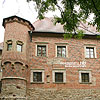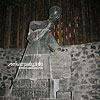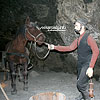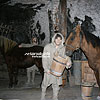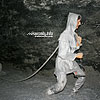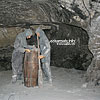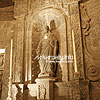Malopolska region
Malopolska region (województwo małopolskie) is located in southern Poland. It borders with Silesian province in the east, Świętokrzyskie province in the north, Subcarpathian region in the east and Slovak Republic in the south. The territory of Malopolska province consists of 19 counties (districts) and 3 cities with the rights of the county. The administrative centre of Malopolska region is Krakow.
Relief. Malopolska is a historical and ethnographical region, located in southeastern Poland, in the basin of upper and partly central river Wisla. It covers a large area of Polish Carpathians, Sandomir and Czestochowa basins and Malopolska Upland where Krakow-Czestochowa ridge is located. This ridge is unique in its nature and represents the outputs of the Jurassic period limestones on the day surface. The relief of the province is characterized by the significant altitude difference between its northern and southern parts. The territory of Malopolska is mainly located in the highlands and mountains (about 50 % of the territory is located at the altitude of over 500 meters above sea level). The peak of mountain Rysy (2499 metres above sea level), located in the Tatra Mountains, close to the border with Slovakia, is the highest point of Malopolska region. Mountain ranges of Low Beskydy, Pieniny and Gorce extend partially within Malopolska region.
Climate. Malopolska province is located within the zone of moderate continental climate. Significant temperature changes during the year are characteristic for this region: the temperature can change from maximum of +37 °C in July to minimum of -38 °C in January. Snow cover in the Tatra mountains often stays from the beginning of November till the middle of May, though it may snow during other periods of the year as well. In other mountain regions of the province snow starts to melt in March. Malopolska region is characterized by some anomalies as well: so-called "halny" — strong warm wind which can melt several dozens centimeters of snow within a few days. "Oravyak" is another type of wind, typical for the region. "Oravyak" is a cold airflow blowing from Babia Gora side that can lower the air temperature even for a dozen degrees within a short period of time. The most favourable weather conditions for mountain trekking in this region start at the beginning of May and last till August-September.
Nature. Six national parks are located on the territory of Malopolska province within a hundred miles. This is a unique phenomenon not only across Europe, but across the entire planet. These are the following parks:
- Babia Góra national park (Suski County)
- Gorce national park (Limanowski County)
- Magurski national park (Gorlicki County)
- Ojców national park (Krakow County)
- Pieniny national park (Nowotarski County)
- Tatra national park (Tatrzański County)
Malopolska province is the territory of considerable natural contrasts. The Tatra mountains are located here. These mountains are the highest in Poland of the alpine type. Their peaks are covered with snow half of the year and the country's most famous mountain lake called Marine Eye is located here, as well as Blendiv desert with significant daily changes of air temperature. Salt mines and mineral waters are considered to be another natural wealth of Malopolska region. Two biggest salt mines that are open for visitors are located in Wieliczka and Bochnia. These are the places where you can breathe in healthy air and visit the underground world of salt sculptures, chapels, museums and cathedrals. Wieliczka, Wapienne, Wysowa, Żegiestów, Krynica-Zdrój, Muszyna, Rabka-Zdrój, Swoszowice and Szczawnica are the biggest resorts where you can improve your health by mineral waters. The following balneological resorts are the most frequently visited in Malopolska province:
- "Wapienne", Wapienne (Gorlicki County)
- "Wysowa-Zdrój", Wysowa-Zdrój (Gorlicki County)
- "Żegiestów", Żegiestów (Nowosądecki County)
- "Krynica-Zdrój", Krynica-Zdrój (Nowosądecki County)
- "Muszyna", Muszyna (Nowosądecki County)
- "Piwniczna-Zdrój", Piwniczna-Zdrój) (Nowosądecki County)
- "Rabka-Zdrój", Rabka-Zdrój (Nowotarski County)
- "Szczawnica", Szczawnica (Nowotarski County)
Historical reference. Malopolska province was formed in 1999 as a result of administrative reform. It formed through full and partial merging of seven other provinces: Krakow, Nowosądecki, Tarnowski, Bielski, Katowicki, Kielicki and Krośnieński provinces. Nowadays geographical borders of Malopolska region do not fully occupy historical lands of Malopolska region. Some archeological researches showed that the oldest Celtic settlements existed on the territory of Malopolska region back in IV millenium BC. Malopolska region has become motherland for many internationally famous people. Pope John Paul II, Oscar Kolberg, Józef Bem, Tadeusz Kościuszko, Stanislaw Lem, Jan Matejko, Józef Piłsudski, Stanisław Witkiewicz and many other famous people were born here.
Cultural and historical heritage. 5 out of 13 Polish sights belonging to the World UNESCO Heritage list are located on the territory of Malopolska region.
- Historical centre of Krakow city (XIV century)
- Salt mines (I century), Wielizcka
- Concentration camp 'Auschwitz' (1940), Oświęcim
- Wooden churches of Malopolska region (XIV century); Bochnia, Gorlice, Nowy Targ
- Kalwaria Zebrzydowska: monastery architectural and park complex (XVII century), Kalwaria Zebrzydowska
Krakow is the administrative centre of Malopolska province and is considered to be the cultural capital of Poland. The cities of Tarnów, Nowy Sacz, Wadowice and others are also rich in historical and cultural sights.
 Ski lifts and ski resorts in Malopolska region:
Ski lifts and ski resorts in Malopolska region:
Ski resorts and ski lifts of Malopolska region provide a wide variety of services related to winter recreation in Polish Carpathians. The diversity of ski resorts will satisfy the needs of both starting skiers and experienced sportsmen. One of the most famous ski resorts in Poland — Zakopane — is located on the territory of Malopolska province.
 Useful links:
Useful links:

 Ukraine
Ukraine Poland
Poland Slovakia
Slovakia
 Українською
Українською